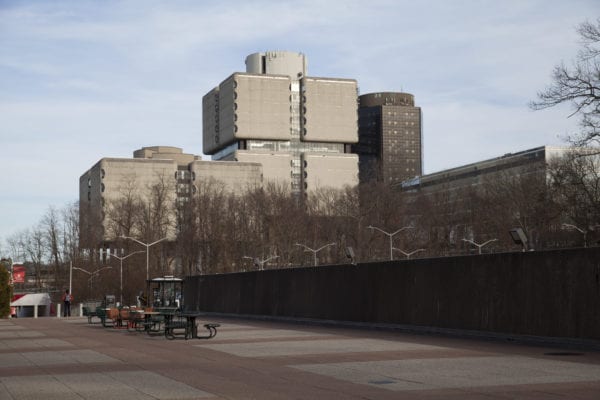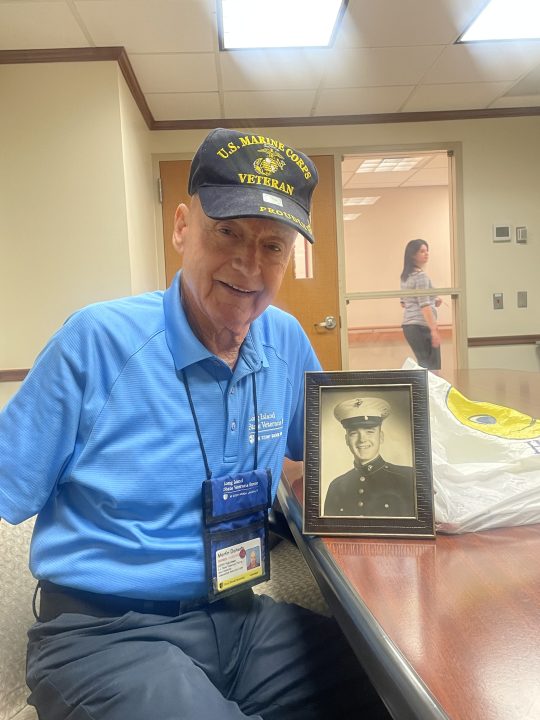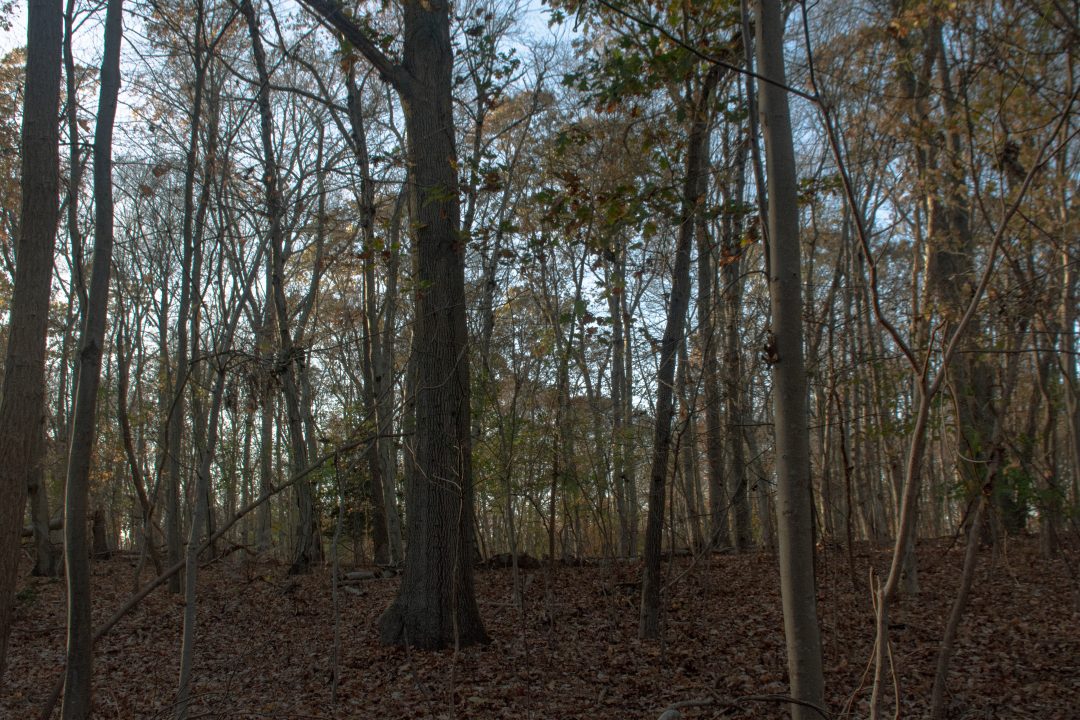
As the first round of COVID-19 vaccines reach New York, Stony Brook Medicine is informing the community about vaccine development and pushing to become a distribution center in Suffolk County within the coming months.
The Dean of the School of Medicine and Senior Vice President for Health Sciences, Kenneth Kaushansky, told the Faculty Senate on Dec. 7 that the hospital requested 9,600 doses of the vaccine to be administered to their staff, from the first batch from Pfizer, a vaccine manufacturer. However, they will receive only around 1,000 vaccines to be distributed to staff in the intensive care unit (ICU) and emergency department.
“Stony Brook University Hospital is among many in the state that will be involved in vaccine distribution,” Stony Brook officials wrote in an email to The Statesman on Dec. 14. “The shipments to hospitals across New York, including Stony Brook University Hospital, is imminent. While the exact timing of delivery is being determined, we have a team currently in place and ready to develop a plan for immediate distribution to priority staff.”
The Food and Drug Administration (FDA) approved Pfizer and BioNTech’s vaccine for emergency use on Dec. 11, right as COVID-19 hospitalizations reached new heights in the United States. 170,000 doses of the vaccine started distribution in New York State on Dec. 14 to front line healthcare workers. The first person to receive the vaccine in the United States was Sandra Lindsay, an ICU nurse at Long Island Jewish Medical Center.
Kaushanky also told the Senate that the hospital is looking to become a center for COVID-19 vaccine distribution in the area, since it has the freezer capacity to store four million doses of the virus vaccine, which must be stored at below freezing temperatures.
“We had a conversation with the [SUNY] Chancellor just last week about making us a very, very important vaccination center in Suffolk County,” Kaushansky said. “And we have a lot of data to suggest that we can do this very well.”
A vaccine stimulates an individual’s immune system to produce immunity, or protection from an infectious disease, toward a specific virus or bacteria. Vaccines can be injected, or ingested through the nostrils and mouth.
New York state is also set to receive 346,000 doses of Moderna’s vaccine, which is supposedly 95% effective, during the week of Dec. 21. That vaccine will be presented to the FDA on Dec. 17 for emergency use authorization.
With front line workers, high risk patients and healthcare staff poised to be amongst the first to receive the vaccine, the general population should expect vaccines available in February or March, Kaushansky told The Statesman.
With shortages in PPE and ventilators in the first COVID-19 peak last March, Kaushansky said that “this time around, our shortest supply will be trained healthcare workers.”
“We cannot afford losing our most valuable staff to illness, because the rest of the population would suffer for lack of well trained hospital personnel,” Kaushansky said.
On Dec. 2, Kaushansky and doctors from Stony Brook Medicine held a symposium as a part of the university’s provost lecture series which discussed COVID-19 vaccine developments to further inform the public.
Although many have shown skepticism and concern over the rapid vaccine developments, Kaushansky said that the vaccinations have been made quicker by conducting different stages of research simultaneously and by using the knowledge obtained from similar coronavirus pathogens. This includes Severe Acute Respiratory Syndrome (SARS) from SARS-CoV-1 in 2003 and Middle East Respiratory Syndrome (MERS) from MERS-CoV in 2012.
“The ‘spike protein’ was identified as an antigenic target for the development of a vaccine against SARS-CoV-2 [COVID-19] at a very early stage,” Kaushansky said. “It was surmised that the spike protein in the current virus, would make a good target for a vaccine.”
On a cellular level, studies have shown that recovered patients with antibodies — which protect them from contracting the coronavirus — can thank the binding capabilities these same antibodies possess. By attaching to the spike protein on the surface of COVID-19, the antibodies block the virus from attaching and gaining entry into the cell.
Traditionally, a weakened or an inactivated virus has been utilized in immunizations. Currently, the competing developers involved in advanced COVID-19 clinical trials are propelling three different technologies to form immunity: RNA,Viral Vector and protein subunit vaccinations.
“All three vaccine types have the same goal: to generate an immune response, that is composed predominantly of neutralizing antibodies that recognize the spike protein, and prevent it from binding to cells and entering our cells,” Dr. Bettina Fries, the chief of infectious disease at the School of Medicine said during the symposium.
Pfizer’s vaccine, which is also known as, BNT 162b2 nucleoside-modified mRNA, requires 30 micrograms and two doses 21 days apart for ages 16 and older. An –80 degree Celsius storage temperature is also pertinent, as the mRNA component is fragile.
On November 18, Pfizer reported that vaccine efficacy was at 95% in participants without prior SARS-COV-2 infection, as well as participants with prior infection. Out of the 170 cases of coronavirus, 162 were observed in the placebo group, eight of which were amongst those vaccinated.
10 severe cases of COVID-19 were noted. Nine participants were in the placebo group, while one was in the vaccinated sample. Efficacy is exemplified consistently across age, gender, race and ethnicity.
“Side effects are pretty similar to what some people experience after a flu shot, such as muscle aches, low grade fever [and] injection site inflammation,” said Kaushansky.
The symposium also addressed the use of protective antibodies, such as REGEN-COV-2 (Regeneron), a drug used by people like President Donald Trump to treat the virus. Kaushansky said that this method of protection is only partial and temporary.
“The immunity is gone as soon as the administered antibodies are gone — usually 3 weeks after,” Kaushansky said.
Fotis Sotiropoulos, interim provost and senior vice president for academic affairs, praised the rapid vaccine development during the symposium.
“This has to be one of the most striking scientific accomplishments,” Sotiropoulos said. “Attesting to the boundless human ingenuity and awesome power of the convergence of biology with biotechnology and information technology.”
According to Johns Hopkins University’s global COVID-19 dashboard, there have been 16,557,151 confirmed cases of COVID-19 and 301,532 COVID-19 related deaths in the United States as of Dec. 15. New York has had 784,204 confirmed cases and 35,427 related deaths as of Dec. 15.























patricia camera • Jan 13, 2021 at 10:04 am
it only makes sense to have S.B.U. as distribution point for vaccine. I need to have it asap and the wait now is over three months. Hope I stay safe.
Arthur Fishman • Jan 8, 2021 at 7:19 pm
So when will older 75 year old who are in good health and want to get the vaccine, be able to get a appointment to get the vacination and the appointment for the 2nd shot in Long Island?
DIANE FOSTER MALISZEWSKI • Jan 6, 2021 at 9:43 am
I am the HR Administrator at a Defense Contractor in Hauppauge, New York. I would like to be kept informed as to the ability for my Essential Business to be able to get the COVID 19 vaccination. The owners are age 78 and have other underlying health conditions, as well.
Thank you very much for your attention to this request.